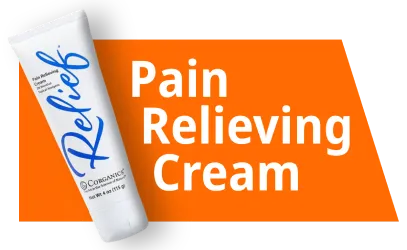When you think about an abnormal curvature of the spine, you probably think of scoliosis. However, scoliosis only refers to a sideways curve in the spine. Your spine can have several different types of curvatures, each with its symptoms, causes, and names. If you notice that your upper back has a hump, or if you notice yourself slouching more and more, you may have a condition called kyphosis. But, what is kyphosis, and how can you tell if you have it? Here’s everything you need to know.
What Is Kyphosis?
Kyphosis, also known as roundback or hunchback, is a condition in which the spine in the upper back has an excessive amount of curvature. Unlike scoliosis, where the spine makes a sideways curve (resembling the letter ‘S’ or ‘C’), kyphosis is a forward rounding of the spine. This leads to a hunchback or slouching posture.
The upper part of your back, also known as the thoracic region of the spine, has a natural, slight curvature. Your spine naturally curves in the neck, upper back, and lower back to help support the weight of your head and absorb shock. Kyphosis is defined as a curvature of the spine measuring 50 degrees or greater on an X-ray.
People with kyphosis often have a visible “hump” on their upper back. From the side, the upper back may even be visibly round or protruding. In addition, people with kyphosis often appear to be slouching and have a visible forward rounding of the shoulders.
Over time, this can lead to excess pressure on the spine, which can lead to chronic back pain. It can also lead to breathing problems due to the pressure the rounding of the spine can put on the lungs. However, not all cases are created the same. There are three main types of kyphosis, all with different causes and symptoms.
Types of Kyphosis
The three most common types of kyphosis are congenital kyphosis, postural kyphosis, and Scheuermann’s kyphosis. Let’s take a closer look at these three types of kyphosis, including what causes them.
- Congenital Kyphosis: Congenital kyphosis, as the name suggests, occurs when a child is born with an abnormal curve in the back. Oftentimes in cases of congenital kyphosis, the vertebrae of the spine are wedged together. This condition will usually get worse as the child grows, and they will most likely need surgery. Congenital kyphosis occurs at birth due to poor development in the womb.
- Postural Kyphosis: Postural kyphosis is the most common type of kyphosis. This is a treatable condition and the mildest form of kyphosis. Teenagers, especially females, develop postural kyphosis as a result of bad posture. During the early stages of life, the spine is flexible, so with proper exercise, postural kyphosis could be treated. For the most part, postural kyphosis does not cause serious illness or pain.
- Scheuermann’s Kyphosis: This type of kyphosis is most common among teenage males. The bones in the spine take on the shape of a wedge, instead of a rectangular shape. As a result, the bones shift forward and cause a rounding of the back. This type of kyphosis is more severe than postural kyphosis and is thought to be caused by poor blood supply during gestation.
What Causes Kyphosis?
 Kyphosis is most commonly caused by poor posture, although it can be caused by other factors. When someone has kyphosis as a result of poor posture it is called postural kyphosis. Kyphosis can occur at any age, although it rarely affects newborns or young children. While still unclear, kyphosis seems to be more prevalent in women than in men.
Kyphosis is most commonly caused by poor posture, although it can be caused by other factors. When someone has kyphosis as a result of poor posture it is called postural kyphosis. Kyphosis can occur at any age, although it rarely affects newborns or young children. While still unclear, kyphosis seems to be more prevalent in women than in men.
Other potential causes of kyphosis include:
- Aging, kyphosis is more common in elderly women
- Muscle weakness in the upper back
- Arthritis or other similar conditions
- Osteoporosis, a bone-thinning disorder that can cause spinal curvature
- Spinal injury
- Slipped or herniated discs
- Scoliosis or lordosis
Now that we’ve covered the causes and types of kyphosis, it’s time to understand the symptoms associated with it.
Symptoms of Kyphosis
The main symptom of kyphosis is having rounded shoulders or a visible hump in the upper back. This can make diagnosing kyphosis relatively easy, although in more minor cases is may not be as simple. Another common symptom of kyphosis is tight hamstrings, as the forward curvature of the spine can put added stress on these muscles.
For people with more severe cases of kyphosis, other symptoms may begin to arise. Some of those can include:
- Pain or stiffness in the back and shoulders
- Numb, weak tingling legs
- Extreme fatigue
- Shortness of breath or other breathing problems
- Problems with balance
- Bladder or bowel incontinence
Can You Prevent Kyphosis?
It’s important to remember that not all kyphosis is caused by poor posture. While postural kyphosis is the most common type, some cases such as congenital kyphosis cannot be prevented. Still, practicing good posture is never a bad thing, and for people with kyphosis, it can be an effective way to deal with pain.
Postural kyphosis can be prevented by being aware of your posture and by taking care of your back. In many cases, postural kyphosis can even be reversed by simply making changes to your everyday life.
A few simple ways you can prevent postural kyphosis include:
- Maintain and practice good posture
- Strengthen your abdominal and back muscles
- Maintain a healthy weight
- Carry bags or other items in a sturdy backpack or roller bag
- Exercise to strengthen your body and stay flexible
While not all types of kyphosis can be prevented, for those with postural kyphosis, these simple tips can help prevent excess curvature of the spine.
Treating Kyphosis


Other treatments for mild kyphosis include:
Physical Therapy: Exercises can strengthen abdominal and back muscles to relieve pain and improve posture. Other exercises can stretch tight hamstrings and strengthen other areas of the body.
Back Brace: Your physical therapist or healthcare provider may recommend using a back brace in more moderate cases of kyphosis. This is most common when children who are still growing have Scheuermann’s kyphosis. This brace can help take pressure off the vertebrae, allowing for the growth of the bony area in the front of the vertebrae to catch up with the growth in the back.
Pain Medications: Certain over-the-counter medications like anti-inflammatories can help relieve back pain related to kyphosis.
Regularly Scheduled X-rays: Closely monitoring the curvature of your spine is a great way to ensure your kyphosis isn’t worsening. Regular X-rays during the teenage years can also help keep tabs on the curve’s progress.
For more severe cases of kyphosis, surgery may be required. A surgical procedure can reduce the curvature to relieve certain symptoms. Healthcare professionals typically recommend surgery for people with:
- Congenital kyphosis.
- Scheuermann’s kyphosis with a curve of more than 75 degrees.
- Severe back pain, when non-surgical treatments have failed
The most common type of surgery used to treat kyphosis is spinal fusion surgery. During this procedure, a surgeon lines up the vertebra in a straighter position, and bonds them together using small pieces of bone to fill in the spaces. As the vertebrae heal, they fuse or join together. This procedure reduces the severity of the curve to support your body better.
Do You Know Someone with Kyphosis?
Let us know in the comments below.
What topics related to back pain should we cover next?
Email us your ideas at info@painresource.com
Want even more Pain Resource content?
Join the fastest-growing chronic pain community by clicking here!




